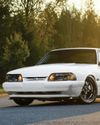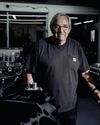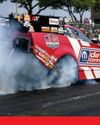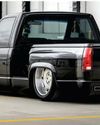試す 金 - 無料
7 Key Things to Consider When Building a Performance Short-Block
Hot Rod
|December 2020
Building a performance engine isn’t difficult, and it doesn’t have to be expensive, but it does take knowledge and planning.

We spent a couple of days at JMS Racing Engines, in El Monte, California, talking with owner Mike Johnson and his machinists and builders to get the scoop on what makes a successful budget performance-engine build. We’re assuming that you’re starting with an engine that is in good condition and hasn’t had more than one overbore, you plan to reuse as many of the stock components as you can, upgrading to higher-performance pieces as your budget permits, and you do the disassembly and reassembly yourself. As with any complicated process like this there are plenty of myths to bust, and just as many procedures to follow. We’ll break everything down into bite-sized pieces.
Source
JMS Racing Engines; El Monte, CA; 626/579-4567; jmsracing.com
Devise a Plan
We cannot stress this enough—the most important part of any engine build begins with a good plan. By good we mean one that is realistic and fits within your budget. Ask yourself: What do you have to work with, and how much can you afford to spend? Are you starting with a lightly used original bore stock block that just needs new rings, bearings, and a hone, or are you starting with a “mystery motor” of unknown origin? We’ve all heard those stories of free engines that were guaranteed to run but, upon closer inspection, needed a lot of work.
このストーリーは、Hot Rod の December 2020 版からのものです。
Magzter GOLD を購読すると、厳選された何千ものプレミアム記事や、10,000 以上の雑誌や新聞にアクセスできます。
すでに購読者ですか? サインイン
Hot Rod からのその他のストーリー

Hot Rod
The Birth of Modern Street Performance
As horsepower increased and EFI entered the chat, the Fox Body Mustang, third-gen Camaros, and G-Bodies laid the foundation for the modern muscle car movement.
2 mins
Winter 2025

Hot Rod
UNRELENTING KEN DUTTWEILER AND HIS LIFELONG QUEST FOR HORSEPOWER
In the horsepower game, whether it be for racing or just street cars, there are hundreds of engine builders.
7 mins
Winter 2025

Hot Rod
TRAGEDY AND TRIUMPH
2025 SPEED WEEK WAS A DEVASTATING ROLLERCOASTER RIDE OF EMOTIONS
7 mins
Winter 2025

Hot Rod
BULLETPROOF
GEARSTAR BUILDS A SUPER-TOUGH TURBO 400 FOR ALEX TAYLOR'S 6-SECOND, 3,000-HP '55 CHEVY
2 mins
Winter 2025

Hot Rod
Charitable Events and Unfortunate Timing
Bonneville Speed Week is a few days behind me, but I'm still struggling with the emotions of the trip.
3 mins
Winter 2025

Hot Rod
THE NEXT CHAPTER
Dodge revealed its long-anticipated ICE-powered Charger Scat Pack, which features a twin-turbocharged 550-hp Sixpack inline-six engine.
2 mins
Winter 2025

Hot Rod
AMERICA'S FASTEST STREET CAR: NED DUNPHY'S 2013 DODGE VIPER
A SMOOTH AND CONSISTENT WEEKLONG ADVENTURE DELIVERS THE OVERALL CROWN AND NEW ET BENCHMARK FOR NED DUNPHY
2 mins
Winter 2025
Hot Rod
PROOF OF CONCEPT
RIDETECH BACKS UP THE TALK BY BUILDING AN 800-HP IRS-EQUIPPED 1985 FOX MUSTANG USING ITS NEW SUSPENSION SYSTEMS.
4 mins
Winter 2025

Hot Rod
WARNING BLACK HOLE THE PERFECT
AV-8, TWICE-TURBOCHARGED 1987 BUICK GRAND NATIONAL BUILT BY DUTCHBOYS HOTRODS AND PACKING AN ENTIRE GENERATION OF HOT ROD DETAILS AND PERFORMANCE
3 mins
Winter 2025

Hot Rod
SLAM DUNK!
THE ROADSTER SHOP TEACHES AN OLD DOG SOME NEW TRICKS WITH THIS SLAMMED AND UPDATED '90S-VIBE OBS CHEVY TRUCK
4 mins
Winter 2025
Translate
Change font size
